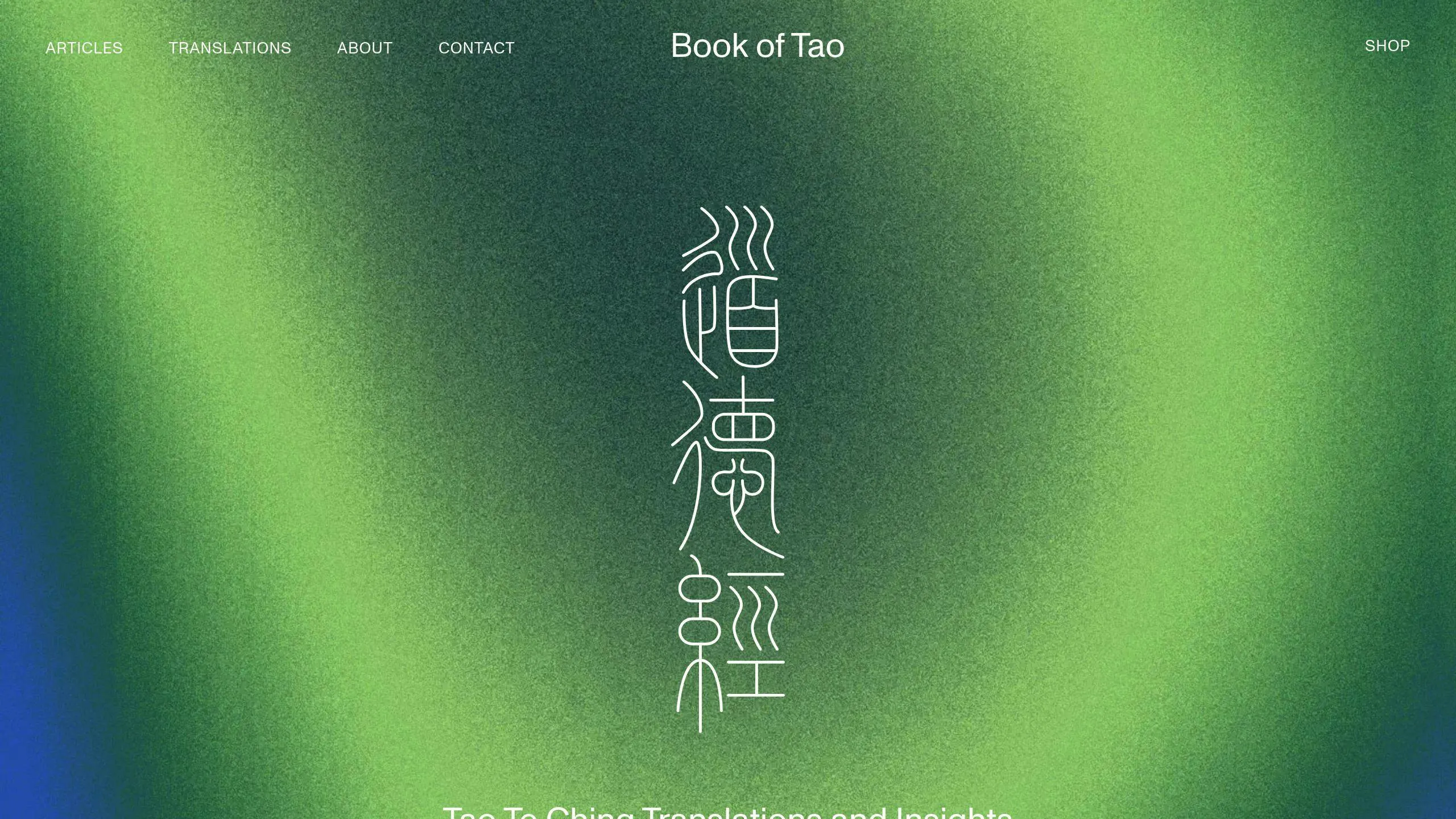The Tao is the natural order of the universe - a concept central to Taoist philosophy. It represents the source and force behind all existence, emphasizing balance, harmony, and effortless action (Wu Wei). While its effects are visible, its essence is beyond words, as famously stated in the Tao Te Ching: "The Tao that can be told is not eternal Tao."
Key Takeaways:
Understanding and living with the Tao means embracing its principles of balance, patience, and trust in life's natural flow.
Taoism Explained by Taoist Master
The Tao: Origins and Meaning
The Word 'Tao'
The Chinese word "Tao" (道) goes beyond its simple translation. The character 道 represents both a "path" and a "journey", carrying layers of meaning like "principle" and "natural course." This depth mirrors the Tao's dual role as both a tangible reality and an abstract idea [1].
The Tao in Early Chinese Thought
Over time, the concept of the Tao expanded beyond philosophy and influenced governance, building on its role as described in the Tao Te Ching.
Different schools of thought offered unique interpretations:
Taoist philosophy highlights four key aspects:
This reflects the Tao's dual nature - it is both evident through its effects and transcendent in its essence. The Tao pervades everything, embodying a harmonious worldview where natural principles influence both personal and societal life. Early applications of Wu Wei (non-forced action) in governance illustrate this alignment [3].
Features of the Tao
The Tao Beyond Words
The Tao is often described as beyond human comprehension. While its effects and manifestations can be observed, its true essence cannot be fully expressed in words. Terms like "dark" (xuan), "indistinct" (hu), "obscure" (huang), and "silent" (mo) are used to hint at its mysterious and transcendent nature [1].
It has two sides: one as a profound mystery and the other as a visible presence in the natural world. This duality helps explain how the Tao operates and connects to practical concepts like Wu Wei, which was covered earlier.
The Tao: Constant Yet Changing
The Tao holds an intriguing duality - it remains consistent in its principles while constantly shifting in how it unfolds. This reflects the balance of existence, where stability and change go hand in hand.
This idea ties back to the concept of Wu Wei, which focuses on aligning with natural rhythms instead of forcing outcomes. It also resonates with the yin-yang balance central to Taoist philosophy [1].
sbb-itb-4c1eb9b
Living with the Tao
Wu Wei: Acting Naturally
Wu Wei, which translates to "non-action", isn't about doing nothing. Instead, it’s about moving in harmony with natural rhythms rather than resisting them [2]. Think of it like a leaf floating effortlessly downstream, as opposed to struggling against the rapids.
The heart of Wu Wei is understanding and working with natural patterns, allowing you to move through life with ease. To practice Wu Wei, focus on:
Daily Taoist Practices
Living according to the Tao involves simple, practical habits that reflect its balance. These practices focus on three main areas:
Mindfulness and Presence
Staying mindful helps you remain grounded in the present, encouraging an open and non-judgmental awareness of your thoughts and environment [2][4].
Balancing Activity and Rest
Taoist living emphasizes balancing active pursuits (yang) with restorative rest (yin) across all aspects of life - physical, mental, and social [2][3].
Simplifying Life
Simplicity is a cornerstone of Taoist practice [2][4]. This could mean:
The goal isn’t perfection but gradual alignment with natural principles. As Taoist scholars often point out, the journey is about steady progress, not forcing change [2][3]. Consistency in these practices is what helps you truly live in harmony with the Tao.
The Tao in Different Contexts
The Tao in Other Traditions
The Tao has influenced more than just Chinese philosophy, playing a key role in shaping Zen Buddhism [2][3]. This connection is evident in several areas:
The
The Tao Today
Despite its ancient roots, the Tao continues to offer practical insights for navigating modern life:
Taoist ideas about staying present have been adopted by today’s mindfulness movement, offering tools to better handle the pressures of modern living
The Taoist belief in aligning with nature inspires practices that encourage ecological awareness and sustainable living, reflecting the harmony of yin and yang
Book of Tao: A Gateway to Taoist Teachings

Book of Tao connects ancient Taoist teachings with modern audiences, offering tools to explore and apply its ideas. Resources include:
This platform balances accessibility with depth, making Taoist wisdom relevant for today’s world.
Conclusion: The Tao's Role
Understanding the Tao
The Tao serves as a guiding principle for living in harmony with the world around us [1][3]. It is both beyond our grasp and present in everyday life, offering insights that blend spiritual depth with practical relevance. This timeless wisdom connects ancient teachings with modern challenges.
Here’s what stands out:
Living in tune with the Tao encourages a life centered on balance and genuine self-expression
The Tao supports personal development by focusing on:
Exploring the Tao Further
Grasping the Tao is an ongoing journey. Its ideas complement practices like Wu Wei and mindfulness, extending into areas like ecological awareness, mindful living, and health practices rooted in natural harmony.
For those looking to dive deeper, consider these resources:
The
The Tao continues to guide people worldwide toward a life of balance, mindfulness, and harmony [2][4].
FAQs
What are the main ideas of the Tao?
The Tao emphasizes three key principles:
These principles often link to practical aspects like those covered in Daily Taoist Practices.
"The Tao that can be told is not eternal Tao"
How to understand Taoism?
Grasping Taoism involves a few essential steps:
Ultimately, understanding Taoism is about experiencing and practicing its principles directly.
.webp)





